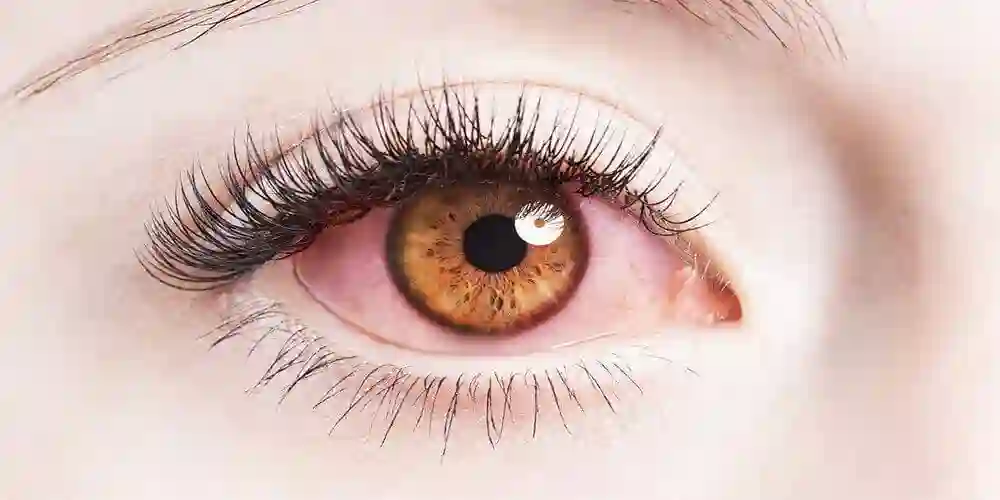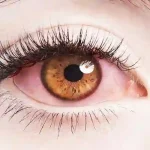Have you ever looked in the mirror and noticed your eyes are red and bloodshot? Don’t worry, you’re not alone! Bloodshot eyes are a common problem caused by lack of sleep, allergies, and screen time. Here, you’ll get to know red eye causes and treatment and more to help you get clear, bright eyes again. Let’s get started!
What Are Bloodshot Eyes (Red Eyes)?
Bloodshot eyes, or red eyes, occur when the tiny blood vessels on the surface of your eyes become enlarged or irritated. This can happen for many reasons—lack of sleep, allergies, or spending too much time in front of screens. While it might look concerning, it’s usually a temporary issue.
Symptoms of Bloodshot Eyes (Red Eyes)
Wondering if your eyes are bloodshot? Here are the key signs to look out for:
- Visible redness: A noticeable red or pink hue in one or both eyes.
- Burning sensation: A persistent burning or stinging feeling.
- Dry or gritty eyes: A sensation of dryness or feeling like there’s sand in your eyes.
- Excessive tearing: Increased production of tears.
- Itchiness: An uncontrollable urge to rub your eyes.
- Light sensitivity: Increased sensitivity to bright lights.
- Swollen eyelids: Eyelids that appear puffy or swollen.
- Blurred vision: Temporary episodes of blurred vision.
If you identify these symptoms, you probably have bloodshot eyes. Let’s further look at the common causes and effective treatments to bring back your eye’s clarity and comfort.
Causes of Bloodshot Eyes (Red Eyes)
You must be wondering what are red eyes causes, here are the common reasons that trigger the condition:
1. Allergies: Allergens like pollen, pet dander, and dust can trigger your body’s histamine response, leading to red, itchy, and watery eyes.
2. Dry eyes: When your eyes don’t produce enough tears or the right kind, they can become dry and irritated, causing redness. This can be worsened by long screen time, dry climates, or certain medications.
3. Eye infection: Infections such as blepharitis (eyelid inflammation), keratitis (cornea inflammation), and uveitis (middle eye layer inflammation) can cause red, uncomfortable eyes, often with discharge.
4. Eye strain: Excessive screen time, reading without breaks, or poor lighting can strain your eyes, leading to redness and discomfort.
5. Environmental irritants: Smoke, pollution, chlorine from pools, or strong fumes can irritate your eyes, making them red and watery.
6. Conjunctivitis: Also known as pink eye, this infection or inflammation of the conjunctiva can be caused by bacteria, viruses, or allergens, resulting in red, itchy, and sometimes crusty eyes.
7. Subconjunctival hemorrhage: A small blood vessel breaking just under the eye’s surface can cause a bright red spot. This can happen from heavy lifting, coughing, sneezing, or rubbing your eyes too hard.
8. Eye injury: Trauma to the eye, like a blow, foreign object, or scratch, can cause redness and inflammation as your eye heals.
To understand what causes bloodshot red eyes in your case, visit a specialist without any negligence. To have a red eye causes a lot of discomfort in carrying out daily routine activities and certainly hinders work as well. Rather than waiting it out, timely medical intervention is necessary.
How to Treat Red Eyes?
Depending upon your causes of red eyes, the doctor suggests a personalized course of treatment which usually includes a combination of the following treatment options:
- Use eye lubricants – Artificial tears can instantly soothe dry, irritated eyes. Perfect for relief from screen strain or dry environments, these drops are a quick fix for redness.
- Try a cold compress – Reduce redness and puffiness with a cold compress. Just soak a clean cloth in cold water, wring it out, and place it over your closed eyes for a few minutes.
- Manage allergies – If allergies are your issue, avoid known triggers like pollen, dust, and pet dander. Use antihistamine drops or take allergy medication to help keep your eyes clear.
- Take screen breaks – Follow the 20-20-20 rule: every 20 minutes, look at something 20 feet away for 20 seconds. This helps reduce eye strain and keep your eyes feeling fresh.
- Keep your eyes clean – Good hygiene can prevent infections that cause redness. Wash your hands regularly, and if you wear contacts, ensure they’re properly cleaned and replaced on schedule.
- Avoid irritants – Stay clear of smoke, pollution, and other environmental irritants. These can aggravate your eyes, making them red and uncomfortable.
- Stay hydrated – Drink plenty of water to keep your body and eyes hydrated. Proper hydration helps reduce eye dryness and redness.
- Use humidifiers – If you’re in a dry environment, using a humidifier can add moisture to the air, preventing your eyes from becoming dry and red.
Consult an eye specialist – If your red eyes persist or are accompanied by pain, discharge, or vision changes, consult an eye care professional for advice and treatment.
Complications & Risk of Red Eyes
1. Vision problems: Red eyes might signal underlying issues that can lead to blurry vision or, in severe cases, even permanent vision loss. It’s better to be safe than sorry!
2. Infections: What starts as a minor irritation can develop into infections like conjunctivitis. Not only is it uncomfortable, but it can also be highly contagious.
3. Eye ulcers: If left unchecked, red eyes can result in corneal ulcers—painful sores on your eye that need prompt treatment to prevent scarring and vision impairment.
4. Spread of disease: Some causes of red eyes are contagious, like pink eye. Ignoring the issue can put those around you at risk too.
H2: Preventive Tips for Red Eyes
As the saying goes, prevention is better than cure. Here are some simple and effective, tips to prevent red eyes (bloodshot eyes):
1. Take breaks from screens: We are mostly hooked to our digital screens, but too much screen time often stresses your eyes. Follow the 20-20-20 rule: every 20 minutes, look at something 20 feet away for 20 seconds.
2. Stay hydrated: Your eyes require moisture to stay healthy. Drink sufficient water throughout the day to keep your eyes lubricated.
3. Use protective eyewear: Whether you’re operating tools, playing sports, or just enjoying the sunshine, be sure to wear appropriate eyewear to protect your eyes from injury and UV rays.
4. Avoid allergens: If you’re to pick allergies, try to steer clear of common triggers like pollen, dust, and pet dander. Keep your living space clean and consider using an air purifier.
5. Get enough sleep: Rest is crucial for your overall health, including your eyes. Aim for 7-8 hours of sleep each night to keep your eyes refreshed and less prone to redness.
6. Practice Good Hygiene: Avoid touching your eyes with dirty hands and always remove makeup before bed. Clean hands and face can prevent irritation and infections.
7. Use Eye Drops Sparingly: While eye drops can provide relief, overusing them can actually make redness worse. Use them as directed and consult your doctor if you need more frequent use.
Home Remedies for Bloodshot Eyes
1. Cold compression therapy: A simple, cool compress can work wonders. Just soak a clean cloth in cold water, wring it out, and place it over your closed eyes for a few minutes. Instant relief!
2. Cucumber slices: Grab a couple of chilled cucumber slices and place them on your closed eyes. Cucumbers have anti-inflammatory properties that can reduce redness and puffiness.
3. Stay hydrated: Keeping yourself well-hydrated is crucial. Drink plenty of water throughout the day to ensure your eyes stay moist and less prone to irritation.
4. Artificial tears: Over-the-counter artificial tears can help lubricate your eyes and flush out any irritants. They’re a quick fix for dry, red eyes.
5. Tea bags: Brew some tea and save the bags! Once they’ve cooled, place them on your closed eyes. The tannins in tea can help reduce inflammation and soothe irritation.
6. Humidifier: Using a humidifier in your home can add moisture to the air, preventing your eyes from drying out and becoming red.
7. Blink More: If you spend a lot of time in front of screens, remember to blink frequently. Blinking helps keep your eyes lubricated and can prevent dryness and redness.
8. Aloe vera gel: Apply a small amount of aloe vera gel around your eyes (avoid getting it in your eyes) for a soothing, anti-inflammatory effect.
9. Keep your blood pressure in check: Hypertension can be a cause of subconjunctival (superficial) hemorrhage (blood)
Conclusion
Bloodshot eyes occur more commonly than you think, but they don’t have to be a part of your daily life. With a few simple tricks—like staying hydrated, taking screen breaks, and keeping your eyes clean—you can keep those peepers clear and comfortable.
However, if the redness persists or comes with pain or vision changes, it’s important to get a professional opinion. Don’t wait—book an appointment at Centre For Sight and let an experienced eye specialist help you keep your eyes healthy and bright!
FAQs
What does a bloodshot eye indicate?
A bloodshot eye may indicate irritation or inflammation, often due to dryness, allergies, or minor infections. Consulting an eye doctor is recommended if the condition persists or worsens. Another cause is subconjunctival (superficial) bleeding.
What causes red blood in the eyes?
Red blood in the eyes can be caused due to burst blood vessels, which can occur due to activities like straining, coughing, or eye rubbing, or occasionally without a specific trigger. These may look severe but tend to resolve itself without complications.
Is it OK if my eyes are bloodshot?
It’s usually okay if your eyes are occasionally bloodshot, often due to irritation, allergies, or fatigue. However, continuous or severe redness may show an underlying issue, so it’s best to consult with a healthcare professional for advice.
How to fix bloodshot eyes?
To alleviate bloodshot eyes, consider using artificial tears, applying a cold compress, and avoiding eye irritants. Getting enough rest and consulting a healthcare professional if symptoms keep lingering can also help.
What is the reason for red eyes?
Red eyes are usually because of things like allergies, dryness, not getting enough sleep, or spending too much time staring at screens. If they stick around, it might be worth talking to a doctor about it.
How can I clear my red eyes?
To alleviate red eyes, consider using lubricating eye drops, applying a cool compress, and taking breaks from prolonged screen use. If symptoms persist, consulting a healthcare provider is advisable for personalized advice and treatment options.
Do red eyes mean you’re sick?
Red eyes may signal irritation from allergies, dryness, tiredness, or environmental factors like smoke. While they usually don’t mean you’re sick, if you’re worried, it’s a good idea to speak to an eye specialist for reassurance.
What causes high red eyes?
High red eyes can often result from tiredness, allergies, or being glued to the screen for long continuous hours. It is your eyes’ cry for help, saying they’re stressed out. If it continues, consider seeing an eye specialist for advice.





